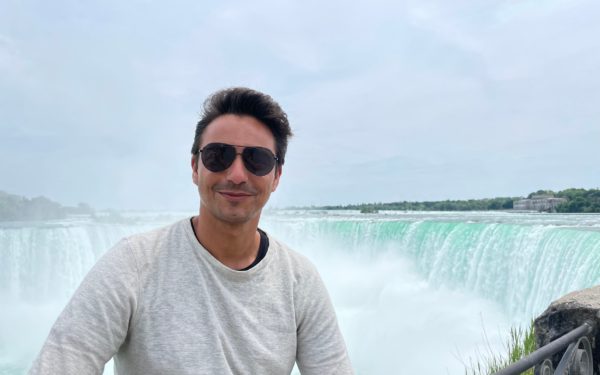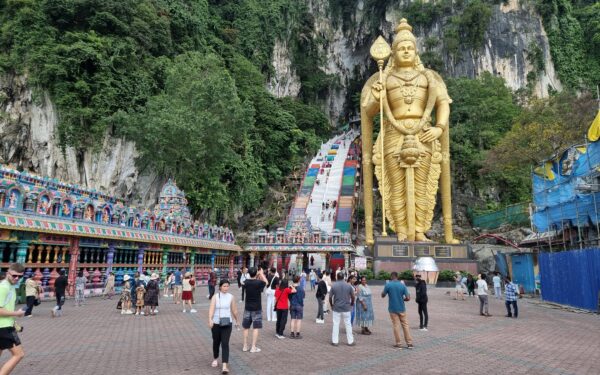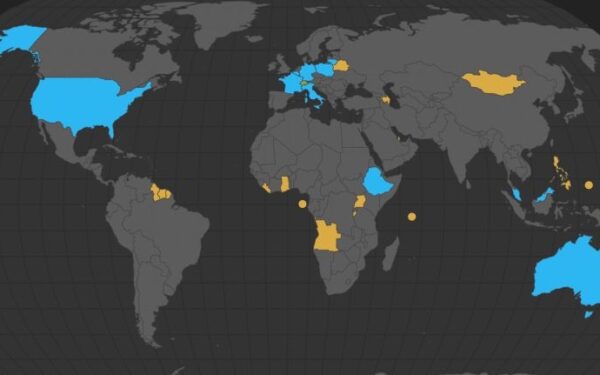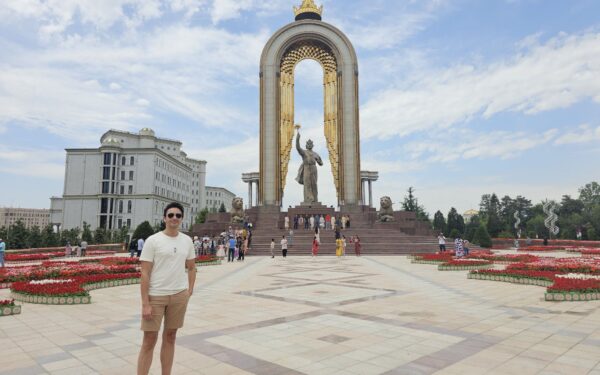Trip Report: Cyprus
Visited in June 2020
It’s been a little more than three months since I returned home from Mauritania and the whole world closed its borders shortly afterwards. My return was almost at the very last second, because one day later the carrier of my route, Turkish Airlines, cancelled all flights to Switzerland. If my return flight had been one day later, who knows how and when I would have got home.
Since then I was grounded at home with my 197 project on hold, waiting to travel to new countries again. This moment had finally come after Cyprus announced at the end of May that it would reopen its borders to tourists from selected countries from June. But let me tell you one thing. Traveling is not as easy anymore as it used to be last year…
That trip demanded more preparations than I have ever had for a trip in Europe. Because although Cyprus reopened its borders, it didn’t mean that everyone can just enter the country. Cyprus only allows citizens of certain countries to enter and fortunately Switzerland belongs to those countries.
However, first the entry requirements for tourists from Switzerland were that we had to present a negative PCR test upon arrival. So, the first question was: where would I get such a test? It took me six phone calls to answer that question, as one Swiss hospital after another forwarded me to the next one. Finally, I recieved the answer where I would get it. But they added that I would not even get a guarantee that the test results were available within 24 hours.
That seemed to be a little bit too risky and I was already considering other travel options. Fortunately, the entry requirements for Swiss changed a few days later, as we suddenly belonged to the so called category A countries, which do not need to provide a negative PCR test anymore.
Too bad that the flight fares tripled in the meantime and I consequently had to postpone the trip for a week. Seriously, I think many people would have given up at this point at the latest and chosen another travel destination. That was not an option for me, though. I was desperate to see a new country and it seemed that I was very close to fix that deal.
There was still a last hurdle to overcome. I had to fill out a form to get the Cyprus Flight Pass, which you need these days in order to enter the country. In this form, you have to provide plenty of details about you and about your stay in the country. Actually, it felt like applying for a visa. Or more precisely, it seemed that an “easy” travel country such as Cyprus suddenly fell into the category of medium to hard countries like Côte d’Ivoire or Djibouti.
But that was okay, as I could not wait to be on the road again. Actually, I have never been longer at home since 2015 and I was more than willing to go the extra mile in order to visit a new country. I printed all the documents I needed and was ready to go…
Flying during the pandemic
Needless to say, air travel is neither what it used to be…
First the good news: none of my flights were canceled, which is currently a quite realistic risk wherever you go. In the coming months, a lot more flights will be canceled than normal, as airlines will only consider it worthwhile to fly once a certain number of bookings have been made. SWISS, for example, expects 10% of all its flights to be canceled at short notice…
Even though my flights departed with no delay, flying was still strange in these times. The airport in Zurich was almost empty and often felt like an abandoned building. On the one hand this had the advantage that I hardly had to wait, be it at the security check or at shops.
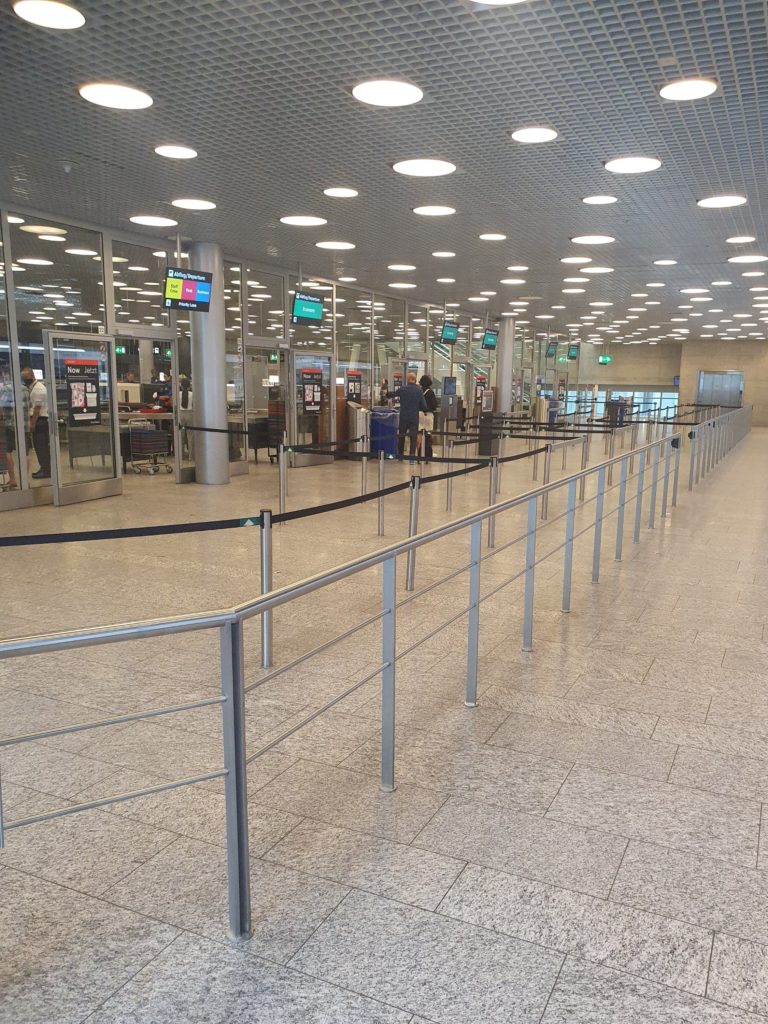
The disadvantage was that many shops were not open at all. Duty free was open (the duty free in Cyprus, by the way, only with a very limited offer), but otherwise practically all shops and also most restaurants were not.
In addition, there was disinfectant for the hands practically everywhere and there was an announcement every few minutes that you should keep a distance of 1.5 meters. Most people were wearing masks, although it was not compulsory (at least not in Zurich).
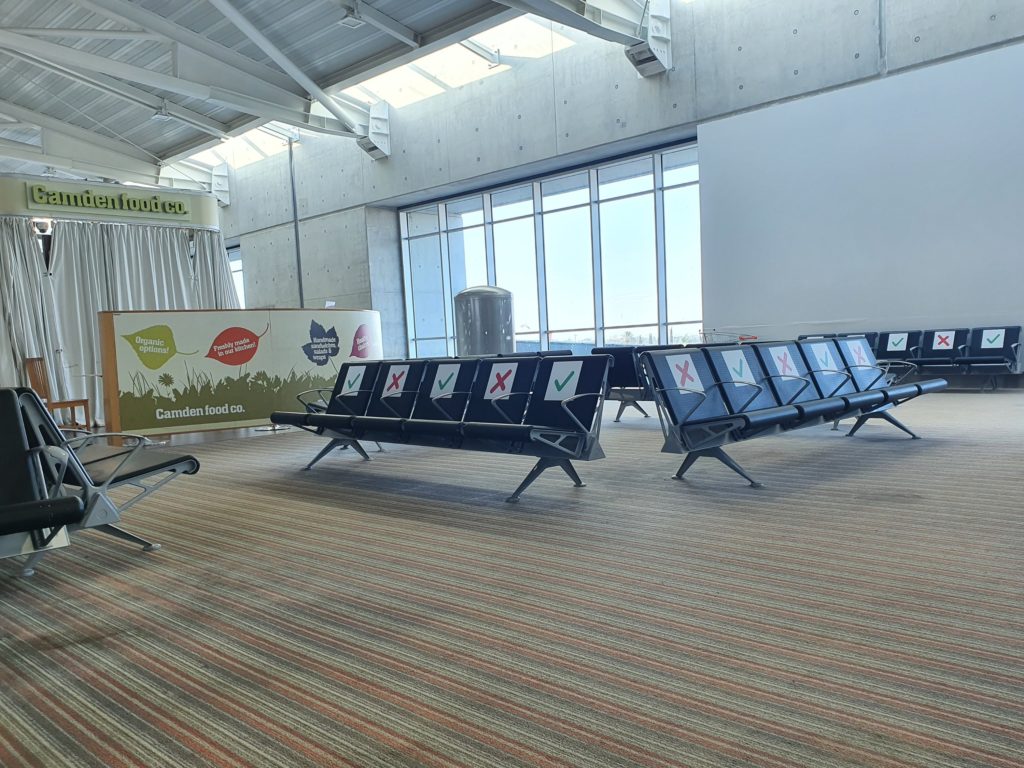
The flight had no single empty seat, which wasn’t surprising as the airline reduced its 14 flights per week to Cyprus to 3. We did not have to wear a mask during the flight, but the airline let us know by an announcement that they would strongly recommend it. Without exception, everyone on the plane wore it and out of consideration for those sitting next to me, I did it as well.
Flying under these circumstances was not as fun as in normal times, but it is still no deal-breaker for me. Nevertheless, I can imagine that many people will not travel during the pandemic, as it simply is too inconvenient for them.
Anyway, everything went according to the plan and I was on my way to Cyprus, country no. 103/197! And my fifth-last country in Europe by the way.
Cyprus during the pandemic
In Cyprus everything went quite smoothly as well upon arrival. You could still notice that things were different than usual. They measured temperature of each passenger, before we had to present the flight pass at immigration. Even when I left the airport, I got a reminder that there is a pandemic. The taxi driver at the airport, for example, told me that passengers were not allowed to sit in the front.
It goes without saying that I encountered many safety measures in the hotel. Obviously, plexiglass separated the reception from the guests and the hotel policy did not allow more than two people to use the elevator at the same time. Moreover, you had to wear a face mask and gloves in the elevator, whereby I did not see a single hotel guest doing this.
At the breakfast buffet, you also had to wear masks and gloves when getting food or drinks. Here, the staff interfered if you did not do so. All employees of the four restaurants in the hotel wore masks and gloves, too. It was a little strange, but honestly, I could live with these slight restrictions. At least, I could see that Cyprus takes the pandemic quite serious and I wonder if other travel destinations apply similarly strict standards.
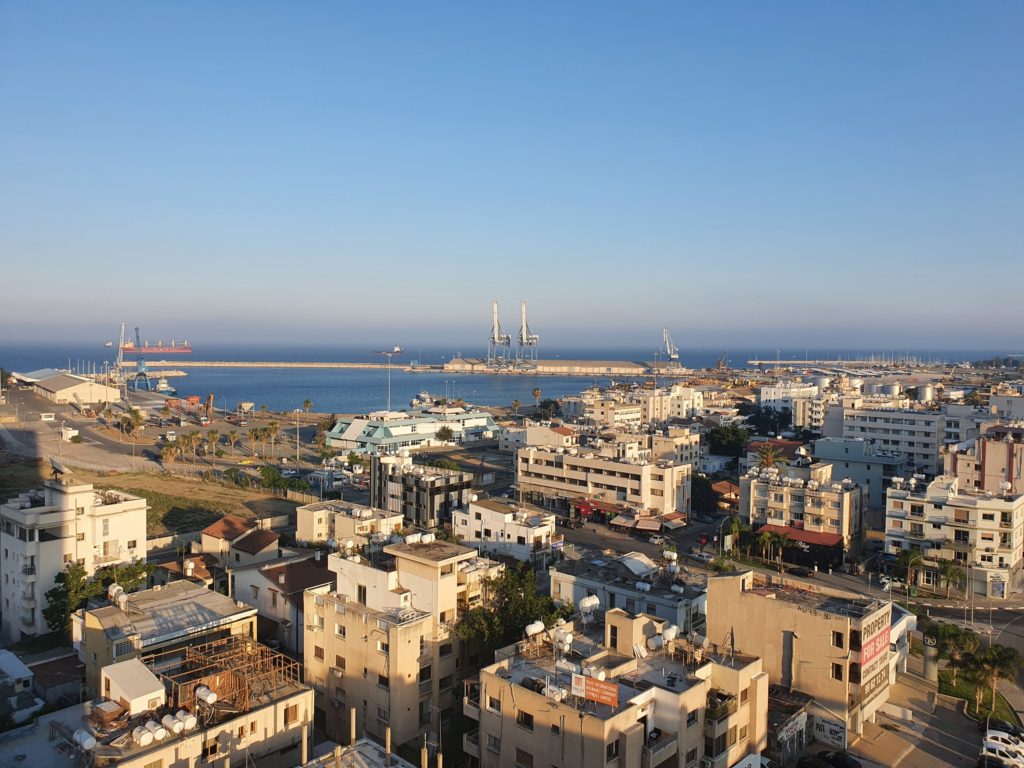
While I had absolutely no problem with the safety measures in the hotel, other restrictions hit me more. For example, there were no tours. For reasons of convenience, I would have preferred to join a tour to see something of the island rather than doing it on my own.
As a result, I contacted several travel agencies and asked if they could organize a private tour for me and named Nicosia, the Famagusta viewpoint and the beaches on the east coast as places I wanted to visit. The cheapest offer I got for a full-day tour was 250€, which would probably have been the most expensive day-trip I have ever experienced.
My plan B would have been to have a local show me around. But since Couchsurfing is not free anymore, this portal is no longer an option for me. So I tried my luck on Showaround, a rather new app where locals can offer tourists their services. Nobody responded to my request, though. Maybe it was too risky for the locals to meet a potential virus spreader from abroad. I can’t blame them.
And so I decided to explore Cyprus alone. Spoiler alert: it only cost me 8€, but I could not do everything I wanted to do. Public transport was also very limited because of the pandemic, some routes (e.g. Larnaca to Ayia Napa) only run once a day compared to once an hour, as it is usually the case. Anyway, the InterCity Buses became my method of transport.
Masks were compulsory in the buses by the way. Those who do not have a mask cannot enter the bus. To be honest, it was rather coincidence that I had a mask with me when I entered it on my sightseeing day. So, always carry a mask with you during the pandemic. You might need it somewhere and will be rejected if you do not have one.
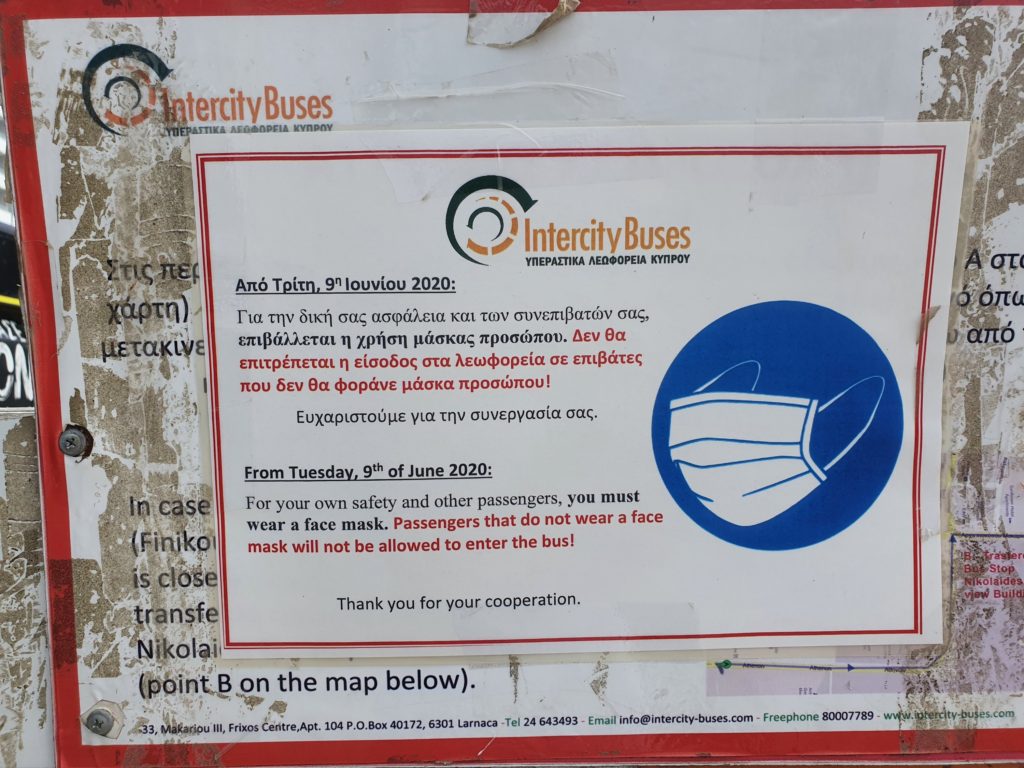
With temperatures beyond 30°C, it was not so fun to hide the face behind a mask in the bus. But as I already said, this trip was not a normal one.
Nicosia: the divided capital
What makes Cyprus special is the fact that it is a divided country. While the entire island is internationally recognized as the Republic of Cyprus, there is a de facto state in the north of the country that occupies about one third of the country’s total area: the Turkish Republic of Northern Cyprus. Although only Turkey recognizes this breakaway-country, a border separates it from the rest of Cyprus.
How could this happen? In short: due to its strategically important location (75km south of Turkey, about 100km west of Syria and Lebanon and about 380km north of Egypt) Cyprus has always had foreign occupiers in the past centuries. And while the island had already been settled by Greeks for a long time, many Turks moved to the island under the rule of the Ottoman Empire and made up a significant minority in the 20th century.
Things escalated in 1974. The question before was whether Cyprus should union with Greece, which of course neither the Turkish minority in Cyprus nor Turkey wanted. This led to an eruption of ethnic violence between the Greeks and the Turks.
As a consequence, a military invasion by Turkey followed in 1974 (secretly encouraged by the UK and the USA, because they feared that Cyprus could become an ally of the Soviet Union and a strong Turkish presence on the island would prevent that). Subsequently, Turkey sent many of its people to Northern Cyprus over the following years. This was a violation of the Geneva Convention, which prohibits the settlement of its own citizens in occupied territories.
Since then, the country has been divided. A 130 kilometer long United Nations buffer zone separates the north from the south. This buffer zone runs directly through Nicosia. Therefore, Nicosia is, since the fall of the Berlin Wall, the only divided capital city in the world. This was the reason why Nicosia interested me way more than the beaches or the mountains on the island.
I arrived in Nicosia in the morning by bus from Larnaca. Compared to Larnaca, which I will describe a bit later, I actually found Nicosia to be a very nice city. Especially the old town with its nice alleys was a pleasure. And there were hardly any people in the city. Cyprus in summer is one of the most crowded destinations in Europe, but this time I practically had it to myself.
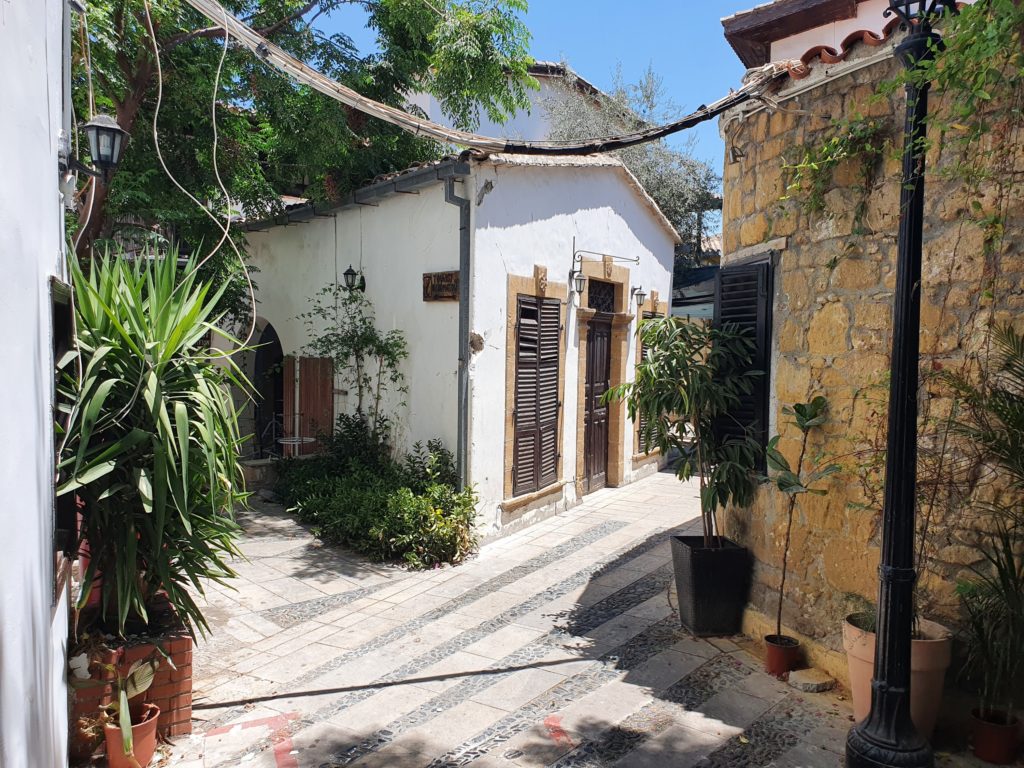
I also found that the Greek influence is much more visible in the capital than in Larnaca. Larnaca could just as well be a city in the Middle East or even North Africa. Nicosia, on the other hand, by its architecture alone definitely seems more Greek.
Nicosia is not a very big city and you can easily explore it on foot. My first stop was the Shacolas Tower, which offers a 360° view over Nicosia and also contains a small museum. Observation towers are usually the first thing I google before I go to a new city, and this one was definitely worth the visit.
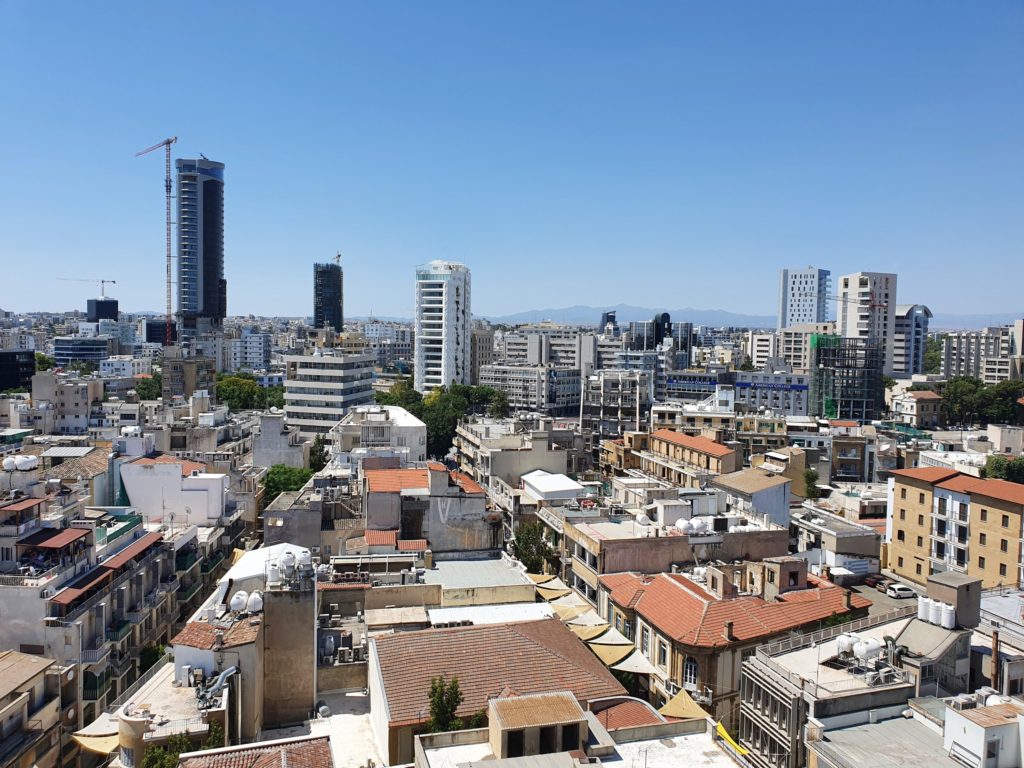
From there I got a great view of Northern Cyprus as well. I immediately noticed the oversized flag of Northern Cyprus, which was drawn into the Kyrenia mountain range a few years ago. Next to it you can see a star and crescent, the emblem of Turkey, and the inscription “Ne Mutlu Türküm Diyene”, a motto of Mustafa Kemal Atatürk. The Greek Cypriots perceive this flag and slogan as a daily provocation coming from the north.
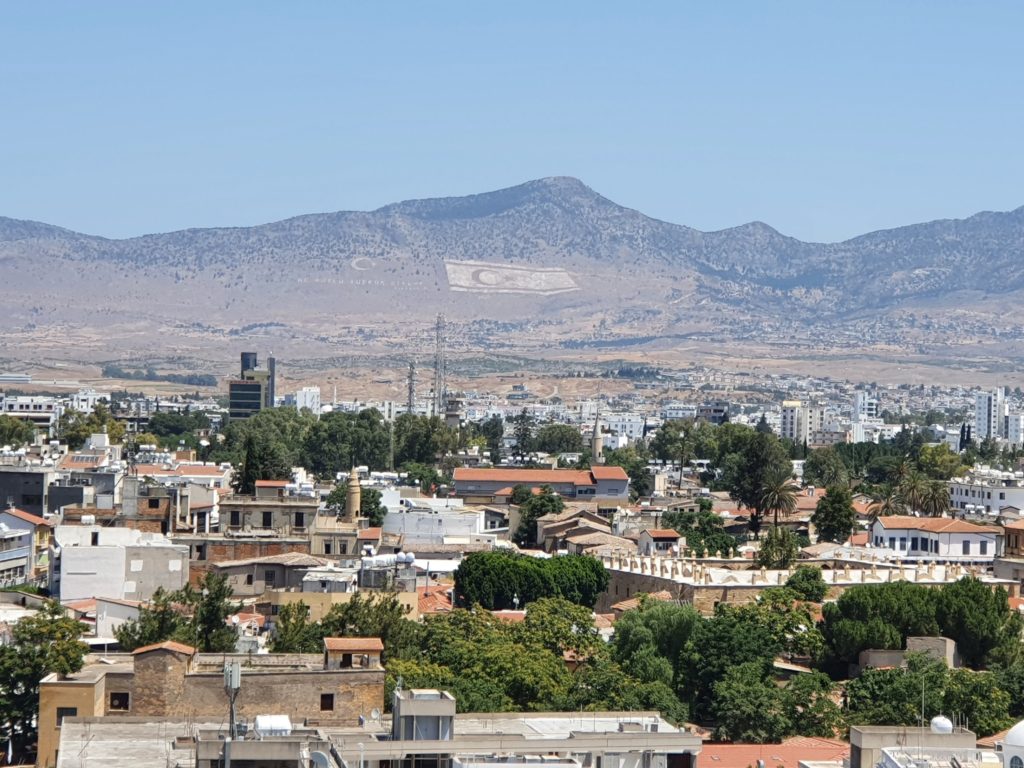
For me it would have been an absolute highlight to cross the border and see two “countries” in one day. Unfortunately, the border is currently closed because of COVID-19. That’s why, Northern Cyprus would already be reason enough for me to return to Cyprus.
But there was a second highlight, namely to walk along the so-called green line. The green line is another term for the UN buffer zone that, as already mentioned, runs right through the city. It takes about 30 minutes to walk along this border and I started in the east and walked to Paphos Gate in the west.
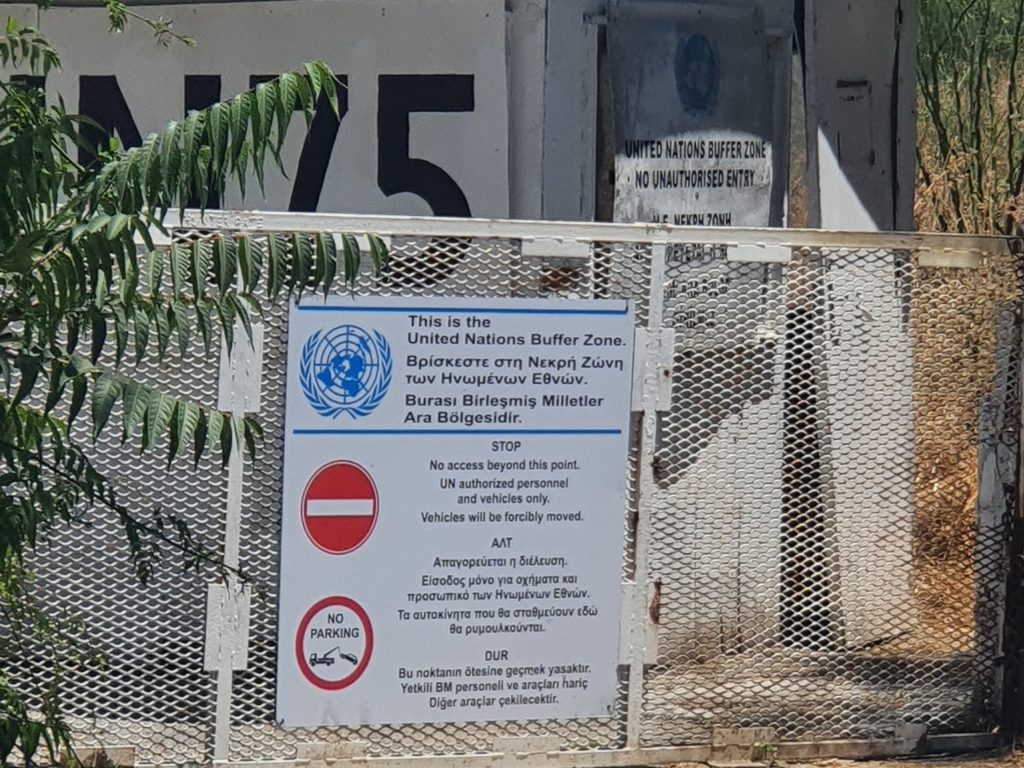
The idea that a city can be separated by a wall has always been absurd to me. The Berlin Wall fell when I was a toddler, so I didn’t really notice much of that time. But even when I was in Berlin I kept asking myself: how can a wall prevent people from getting from one part to another?
The short answer is: no wall can do that, because people always manage to get across (at the moment it seems that many African refugees cross the border from the north at night). Nevertheless, it is impressive to see how two halves of the city are separated from each other here…
The separation is made by walls, but also by houses, fences and other blockades. There are also several checkpoints where soldiers patrol.
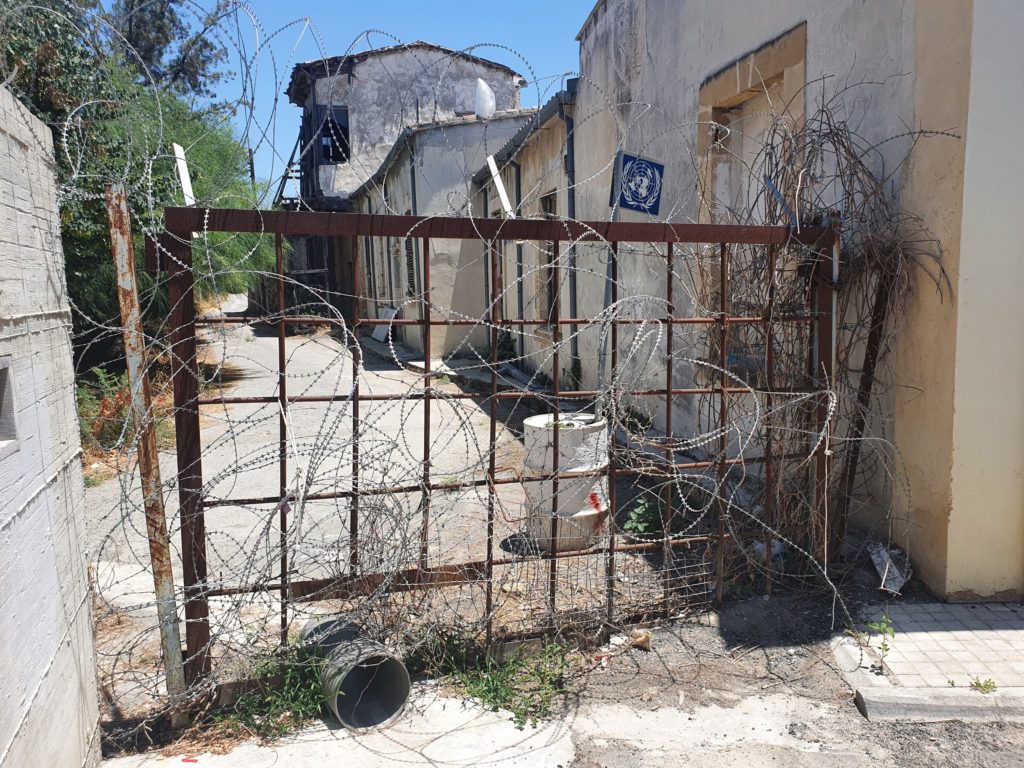
There was a strange silence when I walked along the border. I hardly saw any people, although I sometimes heard that there are people living in the houses that represent the borders. I was not quite sure if this had something to do with the fact that there were only a few tourists in Nicosia, or if this green line is generally not so popular. In any case, it felt surreal.
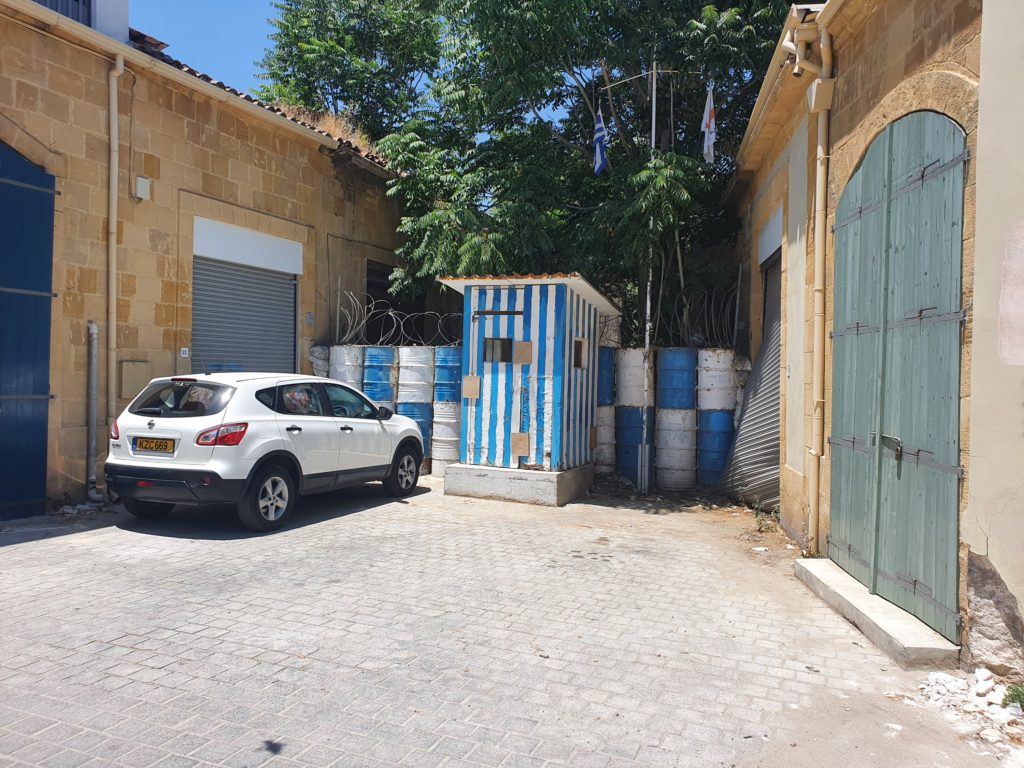
You are not really allowed to take pictures of the UN buffer zone, but since I didn’t see anyone most of the time, I took some photos anyway. Only when soldiers were in sight, I put the mobile phone aside, because these soldiers were watching very closely what the people passing by were doing.
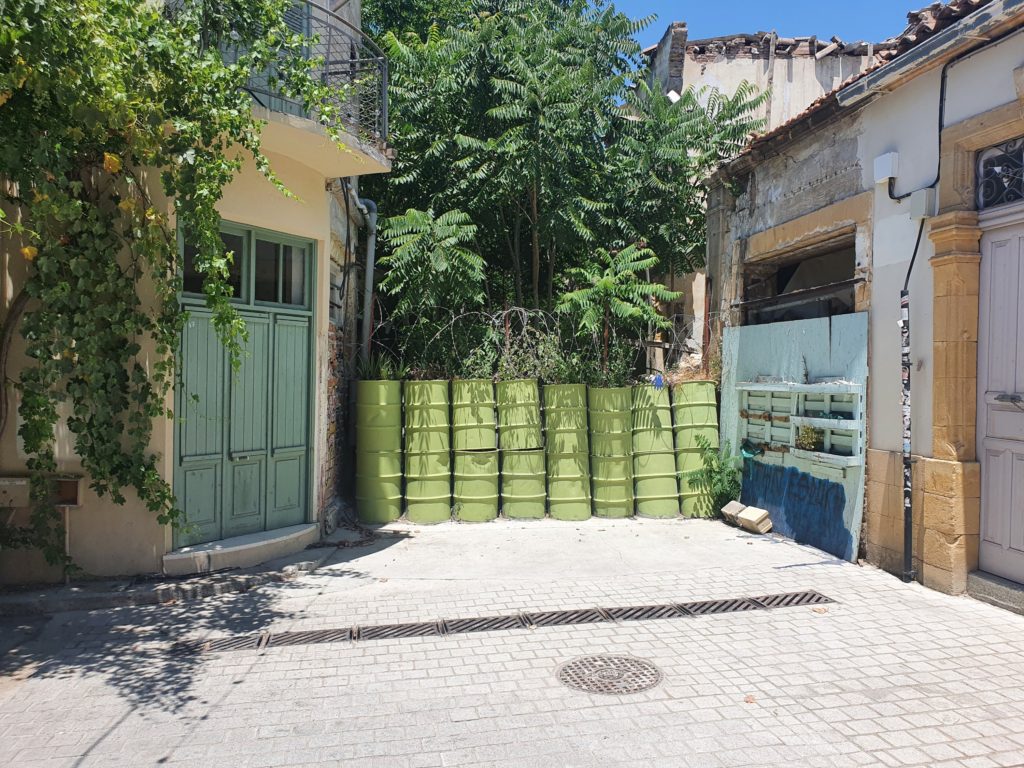
Walking along the green line was quite impressive. I have never seen a divided city before and certainly not a capital. All the more I found it a pity that I could not cross this border.
Since one or the other sight in Nicosia is closed on Sundays, I spent the rest of the day in the city center, which was practically empty. I had places, which are otherwise completely overcrowded with tourists, almost to myself. One of the advantages if you travel during the pandemic.
A bit more busy was Ledras Street, the main shopping street of the city. There I drank some coffee and did some people watching. I noticed the enormous number of Indians in the city. Practically every second person passing by seemed to come from India. A local told me that a big Indian university, which is located in Cyprus, is the explanation for that.
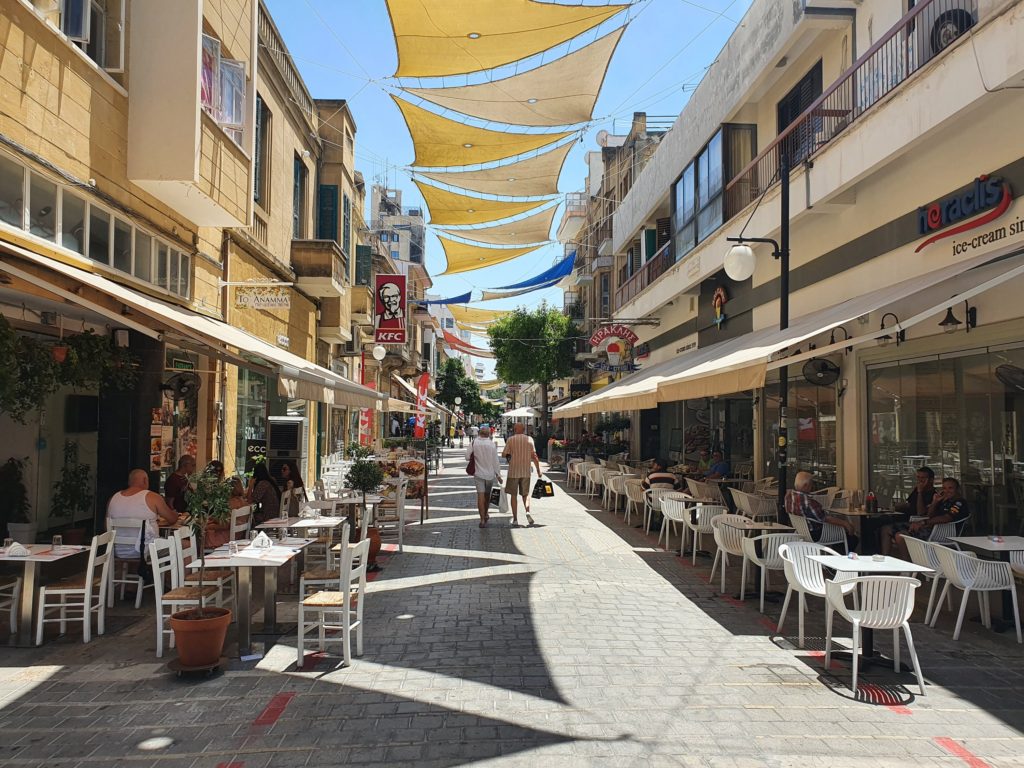
It was incredibly hot in Nicosia by the way. While temperatures in Larnaca were only 32°C, the weather app showed that Nicosia had 38°C. “More than 40°C!!” insisted a taxi driver, as if it was an insult to give Nicosia less than that. But no matter if it was 38°C or 40°C, dealing with these temperatures was a challenge.
I left Nicosia in the late afternoon again in direction of Larnaca. Unfortunately I only saw one half of the city. And probably the part with the less interesting sights. In the north there would have been some things I would have liked to see and save for next time.
Theoretically, I would even have had time to see something else in Cyprus that day. For example the beaches in Ayia Napa, the Troodos Mountains or even Limassol. In the end, the heat and also the limited transport options kept me from doing so. That’s why I decided to rather spend 1-2 hours at the hotel pool. Not very traveler-like, but this time the circumstances were too big for me.
A little taste of Larnaca
Since I had to work a little bit the next day, I had no time to do another day-trip. But I used my last day to see a bit more of Larnaca.
Larnaca is the third largest city in Cyprus after Nicosia and Limassol. My hotel was a little bit away from the center, but when I saw the center I was actually quite happy about that.
Larnaca is not really pretty. A friend of mine described it pretty well: the city is a concept-less construction with an oil rig view. Basically, on the beach promenade one fast food chain follows the other, including beer gardens with Hofbräu München parasols. In other words, a place for tourists, who like to watch Premier League and drink beer during the day.
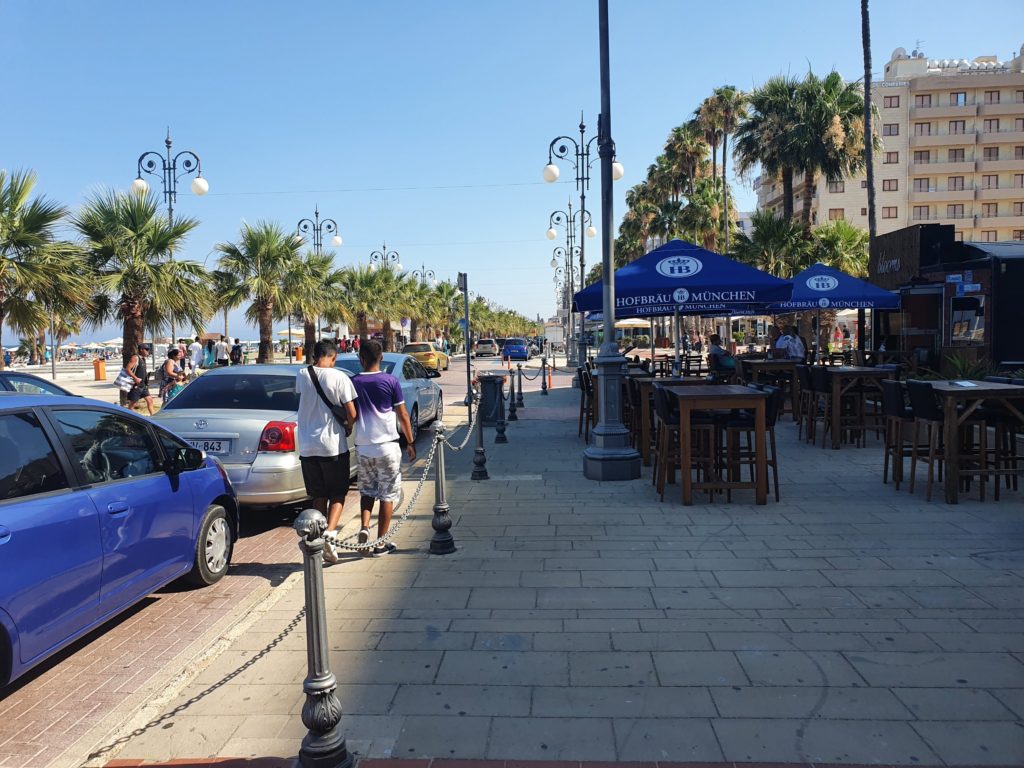
Larnaca also had much less charm than Nicosia. I already knew that, but it is always better to see it by yourself than hearing from others. All in all, it is not worth spending much time in Larnaca. Due to its location between Limassol, Nicosia and Ayia Napa, Larnaca is nevertheless a good base to explore the island.
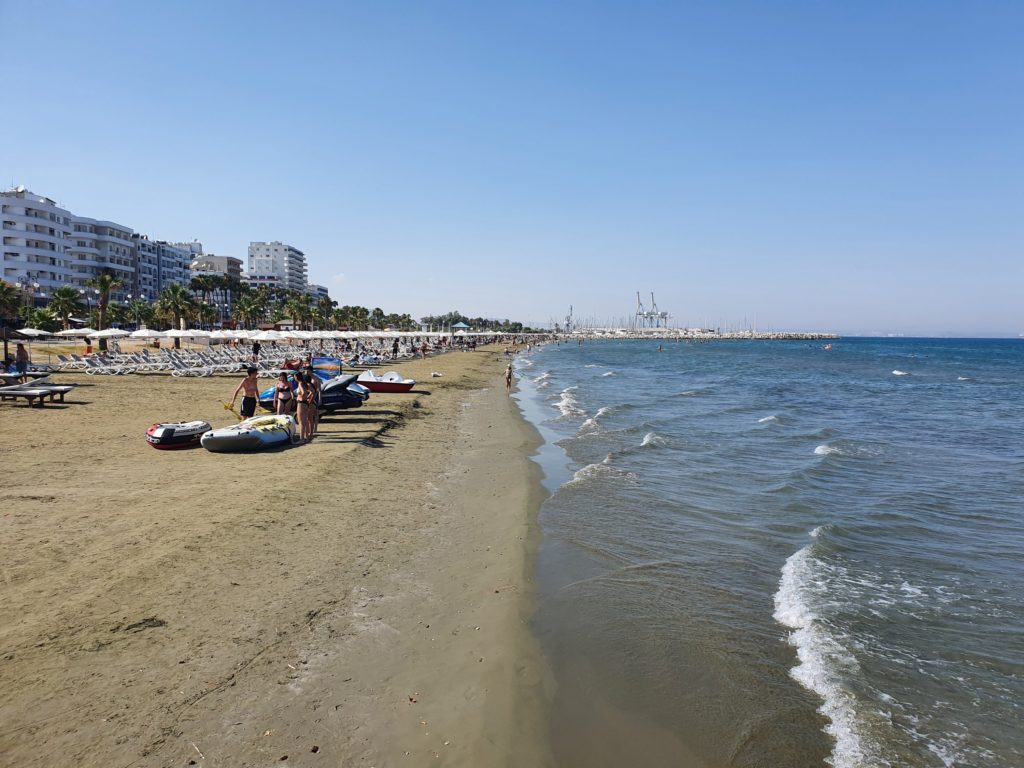
On the way back to the airport I did a brief stop to visit the Salt Lake. This is the second largest salt lake in the country and is advertised as a tourist attraction. I left the bus one stop before the airport and walked along the lake promenade.
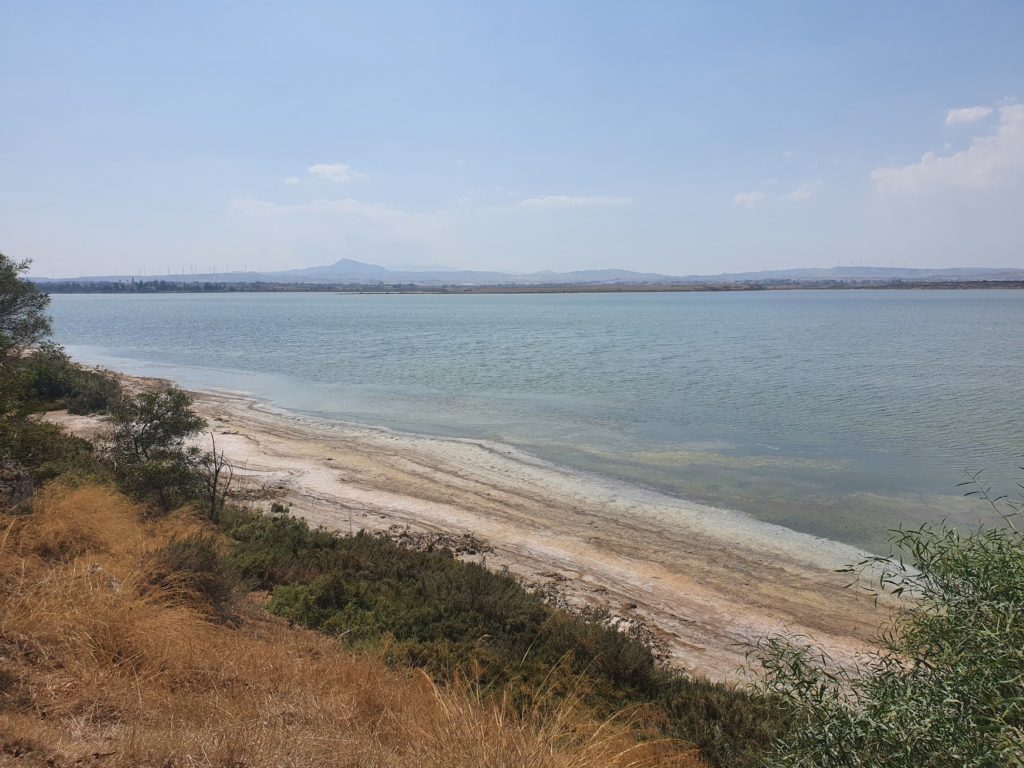
My goal was Hala Sultan Tekke, a mosque that was built two hundred years ago. The walk to this mosque took about 45 minutes and then another 30 minutes back to the airport. Unfortunately, the long walk was not really worth it. The mosque was not open that day and you could not even enter the area.
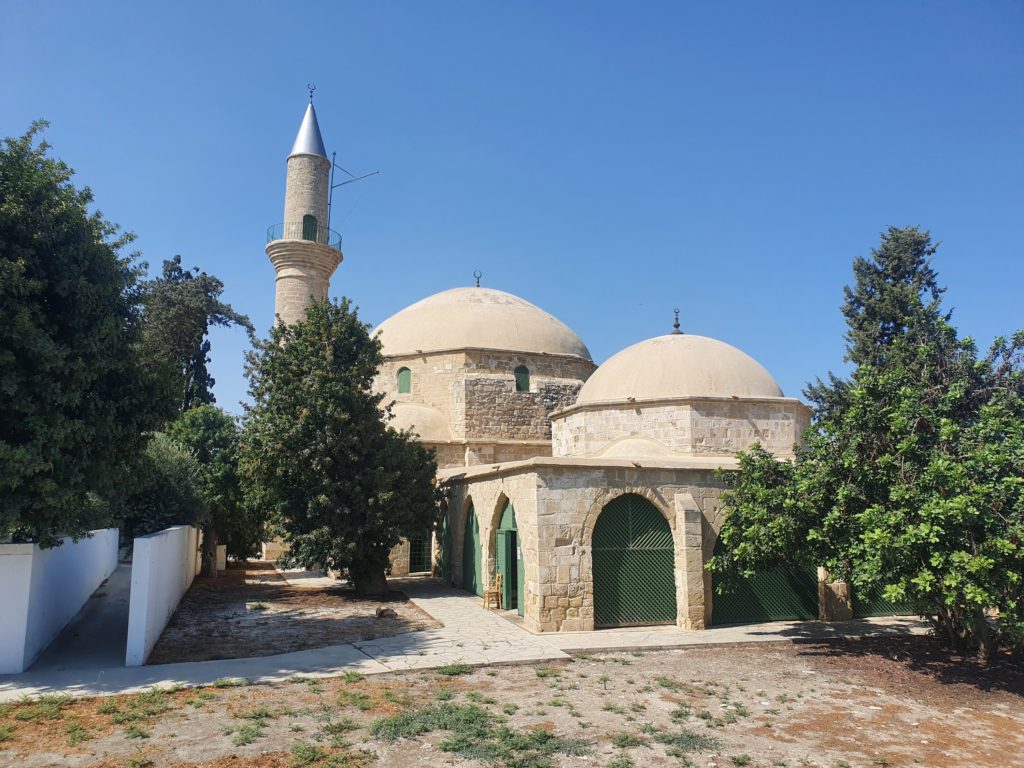
Apart from that, I neither think that one absolutely has to visit the Larnaca Salt Lake. According to the receptionist of my hotel there is no salt layer on the lake since three years. So in the end it is just a big lake with an unpleasant smell. In winter it might be more worthwhile, as you can see flamingos at this time of year. For them the lake is a gigantic all-you-can-eat crab buffet.
Conclusion of the first trip in the COVID-19 era
Cyprus is the fifth-last country I visited in Europe and there are some reasons why I did not feel the need to come here earlier. Cyprus is a classic package holiday destination in Europe, whose crowded beaches always look as if five people occupy one square meter. Plus, you have to be careful at night not to step into the vomit of the numerous young party tourists who have taken the country under siege.
However, the corona pandemic solved practically all of these disturbances. There are currently only a few tourists in Cyprus and certainly not those who would have come here because of the wild and long Ayia Napa nights. However, even though my trip was quite short and I only saw a few things the country has to offer, I still got a good first impression of the country.
Cyprus is an interesting mixture of Greece, Middle East and North Africa. Besides beaches and mountains, Cyprus is also exciting for travelers interested in archeology, history and politics. And although the island is bigger than you might think, you can see and experience quite a lot in a few days. And as a little bonus: Cyprus is one of the few European countries where you can enjoy temperatures of 30 degrees or more even in late autumn.
A comparison with other Mediterranean countries such as Malta or Greece with its islands is difficult. On the one hand because of the short duration of my stay and on the other hand because the Cyprus I saw was certainly not the normal Cyprus. I mean, I enjoyed Cyprus very much without tourists. Whether I would have seen it that way before the pandemic is questionable.
Traveling this year is a challenge. I already booked a trip to country number 104. However, the number of newly-infected people there is increasing as much as in my home country. So, I do not know yet whether that trip is going to happen or not. Let’s see what else I can do this year. My goal is still to reach country number 110 by the end of the year. Whether that is realistic… who knows.
